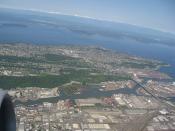Western civilization changed dramatically between 1450 and 1750. While remaining an agricultural society, the West became very commercially active and developed a strong manufacturing sector. Many of the core areas of the West transformed; governments increased their powers, science became the centerpiece of intellectual life and ideas on family and marriage changed. These changes resulted from overseas expansion and increasing commercial dominance. Russia on the other hand was heavily concerned with territorial expansion, eventually becoming the chief power of Eastern Europe. From there, Russian czars embarked on a course of selective Westernization which, despite mimicking of the West, Russia remained outside the global trade system.
During the fifteenth century, Europe moved to a new role in world trade. The common economic changes of this time period brought about the beginnings of mass consumerism to the Western society. As a result of this, social transformations were occurring and led to a different public outlook.
Processed products, such as coffee, tea, and refined sugar, were becoming a part of everyday life in European society. Agriculturally, medieval methods were being replaced with new, more modern techniques. This was a result of the new inventions that came out of the Scientific Revolution. Techniques such as improved stock breeding, use of nitrogen-fixing crops, and swamp drainage emerged throughout European farms. New World crops, such as the potato, increased the food supply and the population. An outcome of these agricultural advances and the growth of international commerce stimulated the use of manufacturing. Capitalism, or the investment of funds in hope of larger profits, also broadened from large trading companies and resulted in the increased production of goods. The household system of production gave farming families extra work due to the demand for textiles and metal products. Important technological improvements, such as the "flying shuttle,"...


